The Hangover Part II (R) ★★½
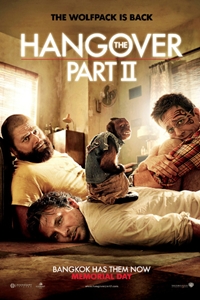 When crafting a follow-up to the highest-grossing R-rated comedy of all time, it's understandable that one might be reticent to mess with a winning formula. But director Todd Phillips and writers Craig Mazin and Scot Armstrong seem to have confused revisiting with recycling: The Hangover Part II so closely mirrors its blockbuster predecessor in every vital aspect that it can scarcely claim the right to call itself a sequel.
When crafting a follow-up to the highest-grossing R-rated comedy of all time, it's understandable that one might be reticent to mess with a winning formula. But director Todd Phillips and writers Craig Mazin and Scot Armstrong seem to have confused revisiting with recycling: The Hangover Part II so closely mirrors its blockbuster predecessor in every vital aspect that it can scarcely claim the right to call itself a sequel.
The only significant new wrinkle introduced in Part II is its setting: Bangkok, Thailand, a location that at least theoretically augurs well for a second helping of inspired lunacy. The story structure of the first film has been copied wholesale, a game of Mad Libs played with its script. The action is again set around a bachelor party, this time in honor of buttoned-down dentist Stu (Ed Helms). Again the boys (Stu, Bradley Cooper's boorish frat boy, Phil, and Zach Galifianakis' moronic man-child, Alan) awaken the next day in a hideously debauched hotel room, with little memory of the previous night's revelry. And again there is a missing companion: Teddy (Mason Lee, son of Ang), the brother-in-law to be. (Poor Justin Bartha is once again relegated to the sidelines, popping up now and then to push the plot forward via cell phone.)
The amnesiac/investigative angle of the first Hangover made for a refreshing twist on the contemporary men-behaving-badly comedy. Repeated here, its effect is arguably the opposite: Too often, the action feels rote and formulaic. Gone is any hint of surprise, an aspect so crucial to good comedy and a huge part of the first film's appeal. Key comic set pieces – a tussle with monks at a Buddhist temple, a visit to a transsexual brothel, a car chase involving a drug-dealing monkey – reveal themselves to be merely variations of memorable bits from the first film.
Tonally, Part II is darker, cruder, and a bit nastier than its predecessor. Female characters, never a priority in the first film, are further marginalized in the sequel. (The only woman with significant dialogue, a Bangkok prostitute, also happens to have a penis. I'll let you ponder the implications of that one.) The three leads, Helms, Cooper, and Galifianakis, still work well together, and despite the inferior material, enough of their chemistry remains to make the proceedings bearable – and occasionally funny. But their characters feel somehow degraded, reduced to coarse caricatures of their former selves. Speaking of caricature, Mr. Chow (Ken Jeong), the fey, faux-gangsta villain of the first film, returns in an expanded capacity in the sequel, his garbled hip-hop slang more gratuitous – and more grating – than before.
I can't help but wonder what might have been if a planned cameo by Mel Gibson, playing a tattoo artist, hadn't been scrapped, reportedly due to objections by Galifianakis. Liam Neeson, Gibson's replacement, apparently proved ineffectual in his first go-round, and when he wasn't available for re-shoots, his scene was eventually shot with Nick Cassavetes in the role. In its existing incarnation, the scene is purely functional, a chunk of forgettable exposition. The presence of Gibson, an actor of not inconsiderable comic talent, would have at least added an air of unpredictability, something the scene – and, indeed, the movie – sorely lacks.
Hollywood.com rated this film 2.5 stars.
To get the full Quicklook Films experience, uncheck "Enable on this Site" from Adblock Plus
box office top 10
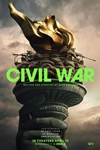
Civil War Released: April 12, 2024 Cast: Kirsten Dunst, Wagner Moura 11.1M
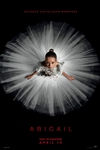
Abigail Released: April 19, 2024 Cast: Melissa Barrera, Dan Stevens 10.2M

Godzilla x Kong: The New Empire Released: March 29, 2024 Cast: Rebecca Hall, Brian Tyree Henry 9.5M
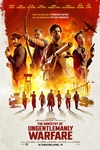
The Ministry of Ungentlemanly Warfare Released: April 19, 2024 Cast: Henry Cavill, Eiza Gonzalez 9M

Spy x Family Code: White Released: April 19, 2024 Cast: Takuya Eguchi, Saori Hayami 4.9M
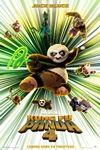
Kung Fu Panda 4 Released: March 8, 2024 Cast: Jack Black, Viola Davis 4.6M
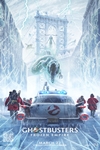
Ghostbusters: Frozen Empire Released: March 22, 2024 Cast: Paul Rudd, Carrie Coon 4.4M

Dune: Part Two Released: March 1, 2024 Cast: Timothée Chalamet, Rebecca Ferguson 2.9M
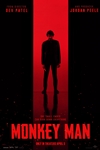
Monkey Man Released: April 5, 2024 Cast: Dev Patel, Sikandar Kher 2.2M
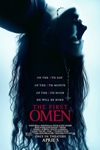
The First Omen Released: April 5, 2024 Cast: Nell Tiger Free, Bill Nighy 1.7M






